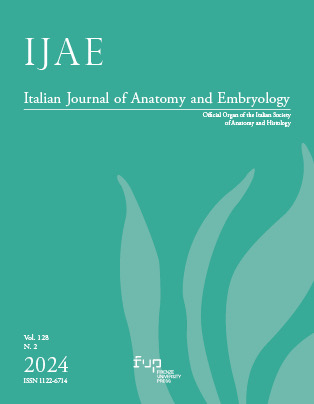A study of morphology and morphometry of scapula in North Indian population and its evolutionary significance
Published 2024-12-31
Keywords
- length of scapula,
- breadth of scapula,
- supraspinous fossa,
- infraspinous fossa,
- scapular index
How to Cite
Copyright (c) 2024 Ritika Sharma, Rajan Sharma, Rajan Kumar Singla, Jagdev Singh Kullar

This work is licensed under a Creative Commons Attribution 4.0 International License.
Abstract
Introduction. Morphometrics can quantify a trait of evolutionary significance and deduce something of their ontogeny or evolutionary relationships. The present study intends to establish the morphometric criterion of scapula in North Indians. This is of definite significance as bone morphology is known to be influenced by cultural, environmental and racial factors. Materials and methods. The present study was carried on 100 adult scapulae of unknown sex obtained from Department of Anatomy, Government Medical College, Amritsar. The parameters studied were length of scapula; maximum breadth of scapula; superoinferior length, transverse breadth and depth of supraspinous fossa; length of infraspinous fossa, maximum breadth of infraspinous fossa, infraspinous fossa breadth, groove for circumflex scapular vessels and its distance from lateral angle and inferior angle, ridge between origin of teres minor and teres major on lateral border of infraspinous fossa, length of attachment of teres minor on infraspinous fossa, length of attachment of teres major on infraspinous fossa; scapular index and infraspinous index. Results. The values of the parameters were found to be more on the right side except superoinferior length of supraspinous fossa, mean distance of the groove from the lateral angle and inferior angle. Mean scapular index and mean infraspinous index were 68.30 and 76.40 respectively. Discussion. The various morphologic parameters studied and morphometric values measured in our study can be used to compare the racial characteristics and study the evolutionary aspects in different populations.

